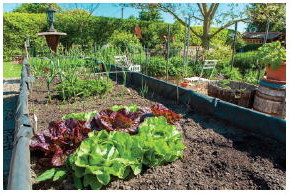the - Teachable Moment
the Teachable Moment
Victory gardens were vegetable gardens planted during World War I and World War II in order to ensure an adequate food supply for civilians and troops. Government agencies, private foundations, businesses, schools, and seed companies all worked together to provide land, instruction, and seeds for individuals and communities to grow food.
They came about as Americans responded to food shortages during World Wars I and II by planting vegetable gardens at their homes or in public places, such as parks. The purpose was two-fold – provide food for civilians at home and soldiers overseas, and boost the morale of people by giving them a sense of working for the common good. By the end of World War I, more the five million victory gardens had sprouted. During the height of World War II, nearly 20 million households in the U.S. tended Victory Gardens, which produced more than one million tons of vegetables. Born out of necessity during wartime, Victory Gardens are a great way for gardeners to learn sustainability and self-reliance.
Victory Gardens help reduce grocery costs, relieve stress, and promote self-reliance and sustainability for those who tend a garden. Today about 25 million Americans are back to gardening an estimated four million acres of land in Victory Gardens. These gardens can be a few containers on your deck or porch or a section of your backyard. They can improve your family’s diet and/or mental health by getting outside and taking positive action, no matter how ambitious or modest it is. Doctors are stressing that sunshine, fresh air, and rediscovering your creative side beats watching 24 hours of news any day of the week.






